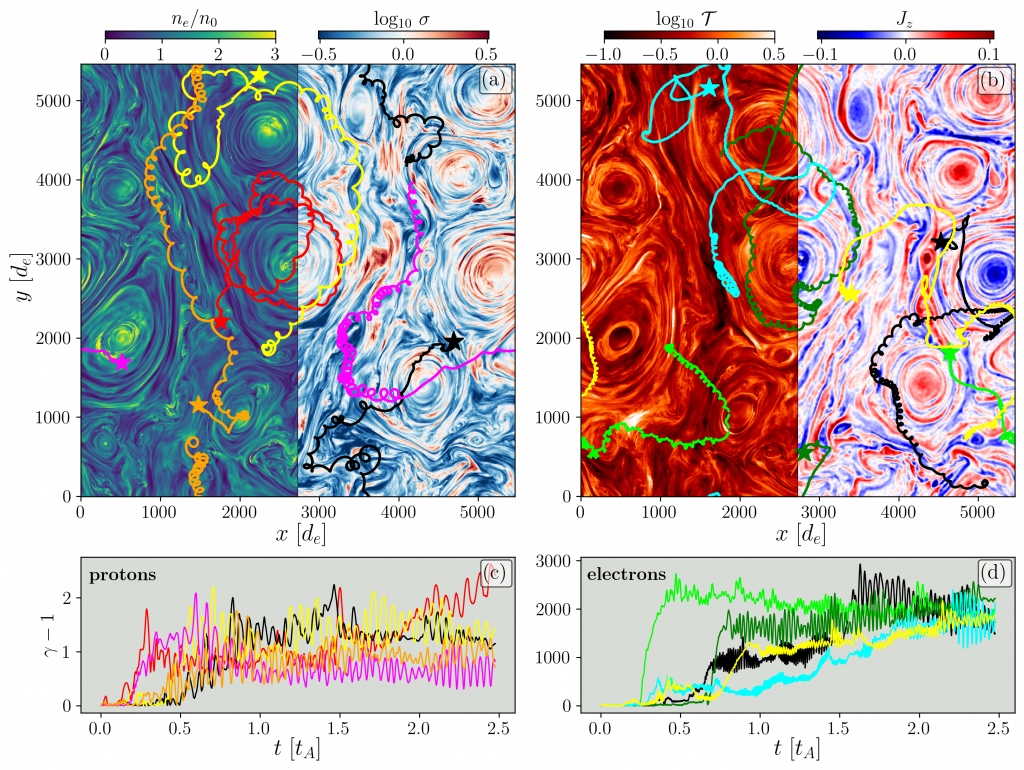A recent paper from a collaboration between the Relativistic Astrophysics Group at Goethe University Frankfurt and the Department of Physics at the University of Calabria in Italy studies the microphysical, and kinetic properties of astrophysical plasmas with particle-in-cell simulations.
In modern simulations of general-relativistic magnetohydrodynamics (GRMHD), the relationship between the temperature of electrons and protons is often based on simplified phenomenological models. Here, the authors study a comprehensive two-dimensional kinetic particle-in-cell (PIC) simulation of special-relativistic turbulence to systematically investigate the microphysical properties of plasma in the trans-relativistic regime.
More precisely, using the Zeltron code and a realistic mass ratio between electrons and protons, they analyzed how the index of the electron energy distributions, the efficiency of nonthermal particle production, and the temperature ratio between electrons and protons vary over a wide range of values of plasma-beta and magnetization. For each of these quantities, this study provides two-dimensional fitting functions to connect the microphysical properties of the plasma with the macrophysical ones. The results of the study have important applications in various astrophysical scenarios, including the accretion and jet emission onto supermassive black holes such as M87* and Sgr A*. Find the publication linked here (open access).
